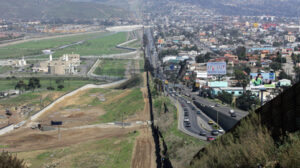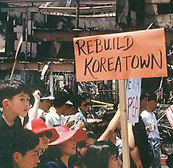
Credit: Photo courtesy of ICE, U.S. Immigration and Customs Enforcement (ICE)
The U.S. experienced increased immigration from former Soviet states and Eastern Europe after the collapse of the Soviet Union in the late 1980s. But since the Immigration Reform and Control Act (IRCA) of 1986, also known as the Simpson-Mazzoli Act, U.S. immigration law and anti-immigrant sentiment has largely been focused on illegal immigration from Central America. The 1986 law was intended to reduce the large number of U.S. immigrants who were either illegal or unemployed. Employers who knowingly hire an illegal immigrant may be subject to financial and other penalities. However, the law included a one-year amnesty provision for illegal immigrants who had lived and worked in the U.S. since January 1982. The 1986 IRCA amnesty offered more than 2.7 million immigrants and others without appropriate visas the opportunity to apply for and receive legal citizenship.
- In 1992, race riots erupted in Los Angeles after police officers were acquitted in the beating of a black man, Rodney King, in an incident that was caught on videotape. Throughout the 1990s, blacks and Hispanics were targets of police brutality in a number of high profile cases, including Haitian American immigrant Abner Louima and Senegalese immigrant Amadou Diallo in New York City. The police practice of stopping black and Hispanic motorists led to charges of racial profiling and violations of civil rights in New Jersey and Maryland.
- After the September 11, 2001, attacks on the World Trade Center and the Pentagon, Congress passed the Patriot Act in 2001 and ushered in a period of heightened scrutiny of certain ethnic groups. Muslims, Arabs and south Asians in particular were subjected to ethnic profiling.
- After losing four years before, in 2005, Antonio Villaraigosa became the first Hispanic mayor of Los Angeles since 1872. The population of Los Angeles is approximately 48% Hispanic, 31% white, 11% Asian and 10% African American.
- For the first time, four states in the U.S. have a majority minority population. They are California, Texas, New Mexico and Hawaii.

Credit: Fragmentsweb.org
“People, I just want to say, you know, can we all get along?”
– Rodney King, in the wake of violence in Los Angeles in April 1992, following the acquittal of the four police officers accused of beating King.
In 1991, Rodney King, an African American, became the focus of national attention after a violent confrontation with Los Angeles police was caught on videotape by a bystander. Racial tensions between the African-American community and the LAPD over the acquittal of the four officers charged with police brutality led to several days of rioting. Korean store owners were particularly hard hit. Many blacks felt Korean store owners were exploiting their neighborhoods, and felt lingering resentment over an incident in which a Korean grocery store owner fatally shot a 15-year-old black girl in a dispute over a container of orange juice. The store owner was fined $500 for killing the girl.




